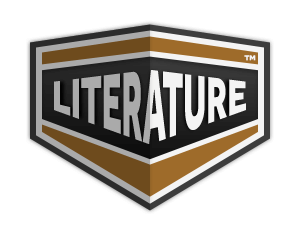The Union Buries Its Dead Page #2
"The Union Buries Its Dead" is a short story by Australian writer Henry Lawson, published in 1901. Set against the backdrop of a miners' strike, the story explores themes of class struggle, sacrifice, and the harsh realities of life in a mining community. It follows the experiences of a group of workers as they navigate the tensions between labor rights and their personal lives, culminating in a poignant reflection on the impact of social conflict on individuals and families. Lawson's vivid prose captures the struggles of the working class and highlights the emotional toll of their fight for justice.
scraped up some light and dusty soil and threw it down to deaden the fall of the clay lumps on the coffin. He also tried to steer the first few shovelfuls gently down against the end of the grave with the back of the shovel turned outwards, but the hard dry Darling River clods rebounded and knocked all the same. It didn't matter much--nothing does. The fall of lumps of clay on a stranger's coffin doesn't sound any different from the fall of the same things on an ordinary wooden box--at least I didn't notice anything awesome or unusual in the sound; but, perhaps, one of us--the most sensitive--might have been impressed by being reminded of a burial of long ago, when the thump of every sod jolted his heart. I have left out the wattle--because it wasn't there. I have also neglected to mention the heart-broken old mate, with his grizzled head bowed and great pearly drops streaming down his rugged cheeks. He was absent--he was probably “Out Back.” For similar reasons I have omitted reference to the suspicious moisture in the eyes of a bearded bush ruffian named Bill. Bill failed to turn up, and the only moisture was that which was induced by the heat. I have left out the “sad Australian sunset” because the sun was not going down at the time. The burial took place exactly at midday. The dead bushman's name was Jim, apparently; but they found no portraits, nor locks of hair, nor any love letters, nor anything of that kind in his swag--not even a reference to his mother; only some papers relating to Union matters. Most of us didn't know the name till we saw it on the coffin; we knew him as “that poor chap that got drowned yesterday.” “So his name's James Tyson,” said my drover acquaintance, looking at the plate. “Why! Didn't you know that before?” I asked. “No; but I knew he was a Union man.” It turned out, afterwards, that J.T. wasn't his real name--only “the name he went by.” Anyhow he was buried by it, and most of the “Great Australian Dailies” have mentioned in their brevity columns that a young man named James John Tyson was drowned in a billabong of the Darling last Sunday. We did hear, later on, what his real name was; but if we ever chance to read it in the “Missing Friends Column,” we shall not be able to give any information to heart-broken mother or sister or wife, nor to anyone who could let him hear something to his advantage--for we have already forgotten the name.
Translation
Translate and read this book in other languages:
Select another language:
- - Select -
- 简体中文 (Chinese - Simplified)
- 繁體中文 (Chinese - Traditional)
- Español (Spanish)
- Esperanto (Esperanto)
- 日本語 (Japanese)
- Português (Portuguese)
- Deutsch (German)
- العربية (Arabic)
- Français (French)
- Русский (Russian)
- ಕನ್ನಡ (Kannada)
- 한국어 (Korean)
- עברית (Hebrew)
- Gaeilge (Irish)
- Українська (Ukrainian)
- اردو (Urdu)
- Magyar (Hungarian)
- मानक हिन्दी (Hindi)
- Indonesia (Indonesian)
- Italiano (Italian)
- தமிழ் (Tamil)
- Türkçe (Turkish)
- తెలుగు (Telugu)
- ภาษาไทย (Thai)
- Tiếng Việt (Vietnamese)
- Čeština (Czech)
- Polski (Polish)
- Bahasa Indonesia (Indonesian)
- Românește (Romanian)
- Nederlands (Dutch)
- Ελληνικά (Greek)
- Latinum (Latin)
- Svenska (Swedish)
- Dansk (Danish)
- Suomi (Finnish)
- فارسی (Persian)
- ייִדיש (Yiddish)
- հայերեն (Armenian)
- Norsk (Norwegian)
- English (English)
Citation
Use the citation below to add this book to your bibliography:
Style:MLAChicagoAPA
"The Union Buries Its Dead Books." Literature.com. STANDS4 LLC, 2025. Web. 23 Feb. 2025. <https://www.literature.com/book/the_union_buries_its_dead_5472>.








Discuss this The Union Buries Its Dead book with the community:
Report Comment
We're doing our best to make sure our content is useful, accurate and safe.
If by any chance you spot an inappropriate comment while navigating through our website please use this form to let us know, and we'll take care of it shortly.
Attachment
You need to be logged in to favorite.
Log In